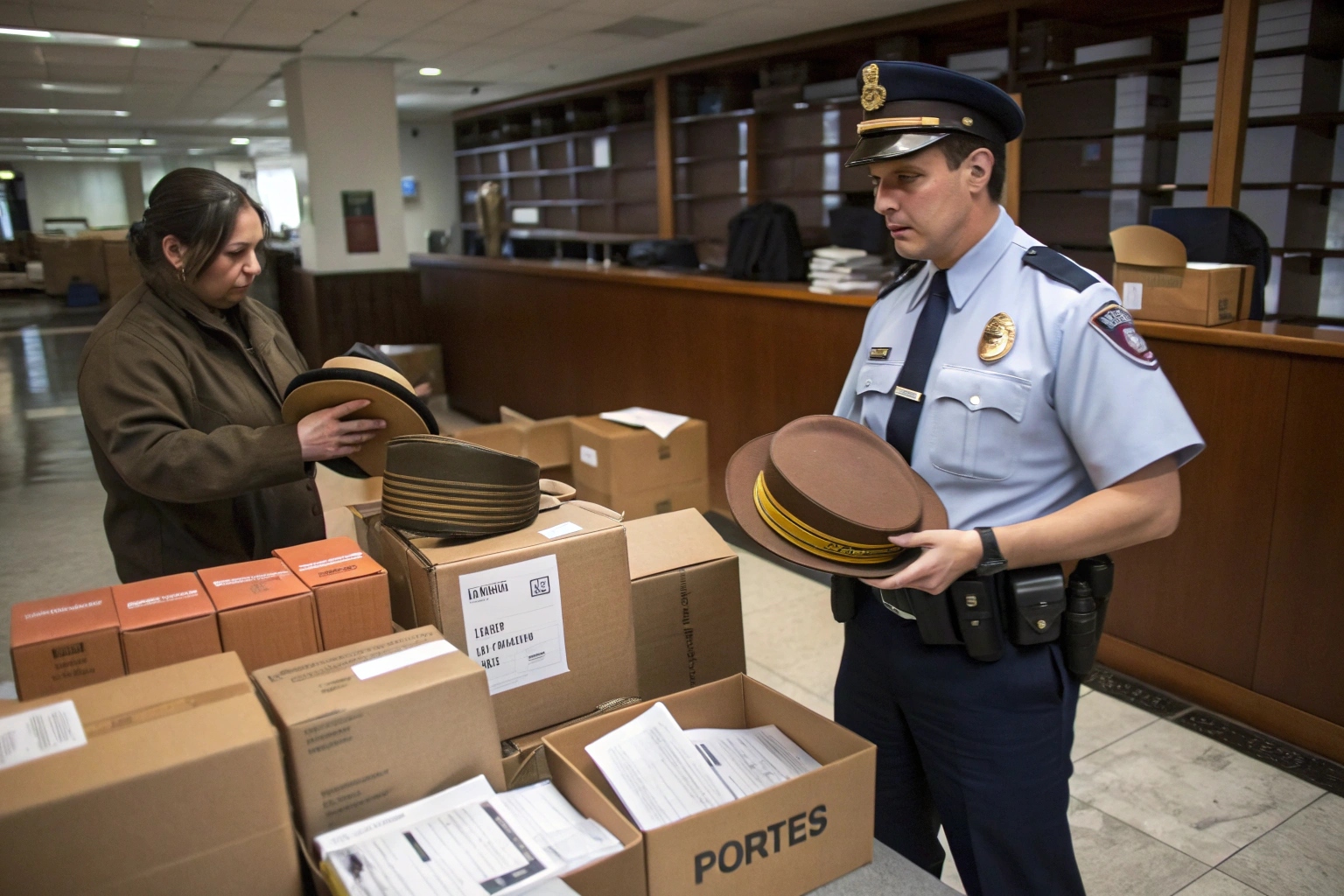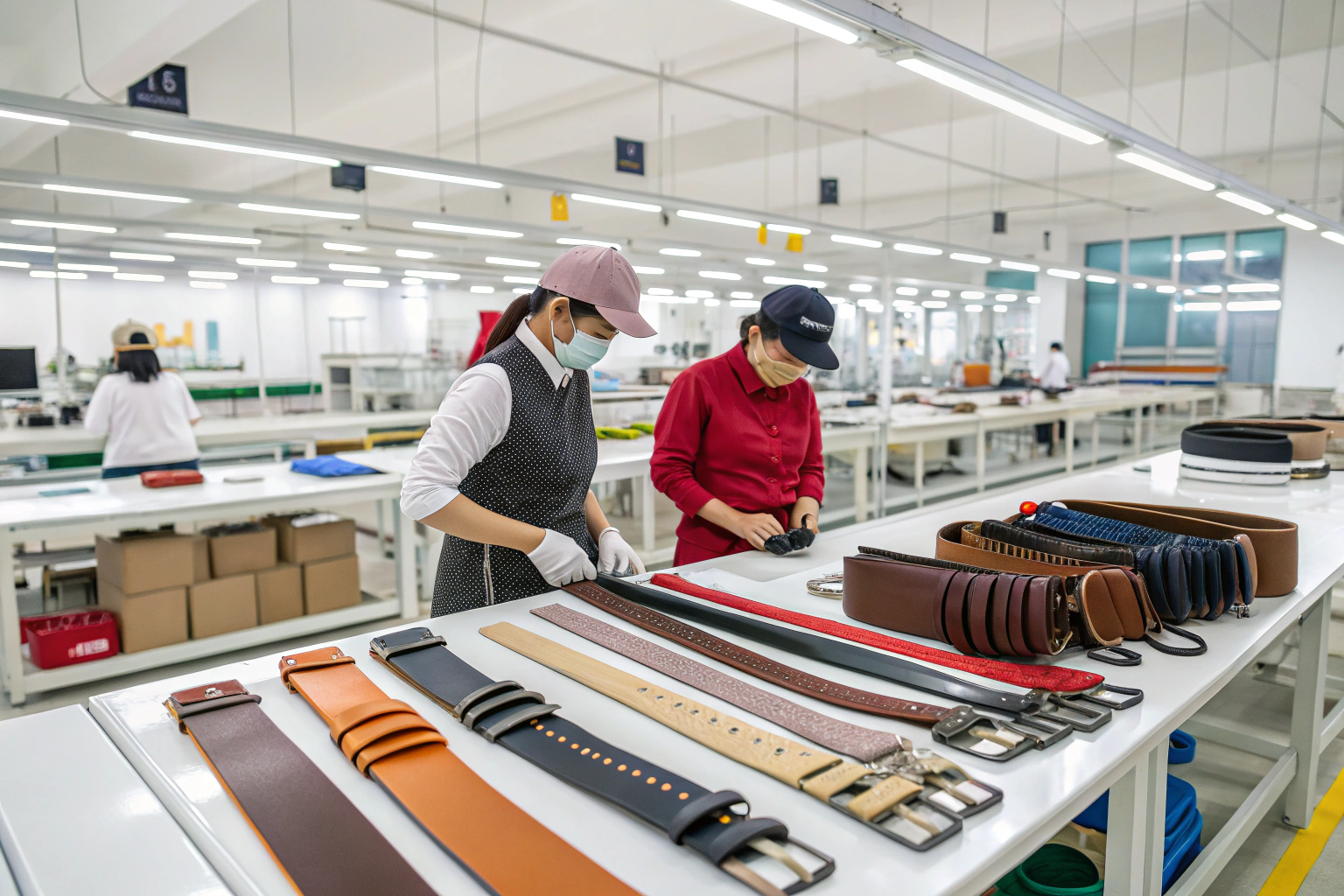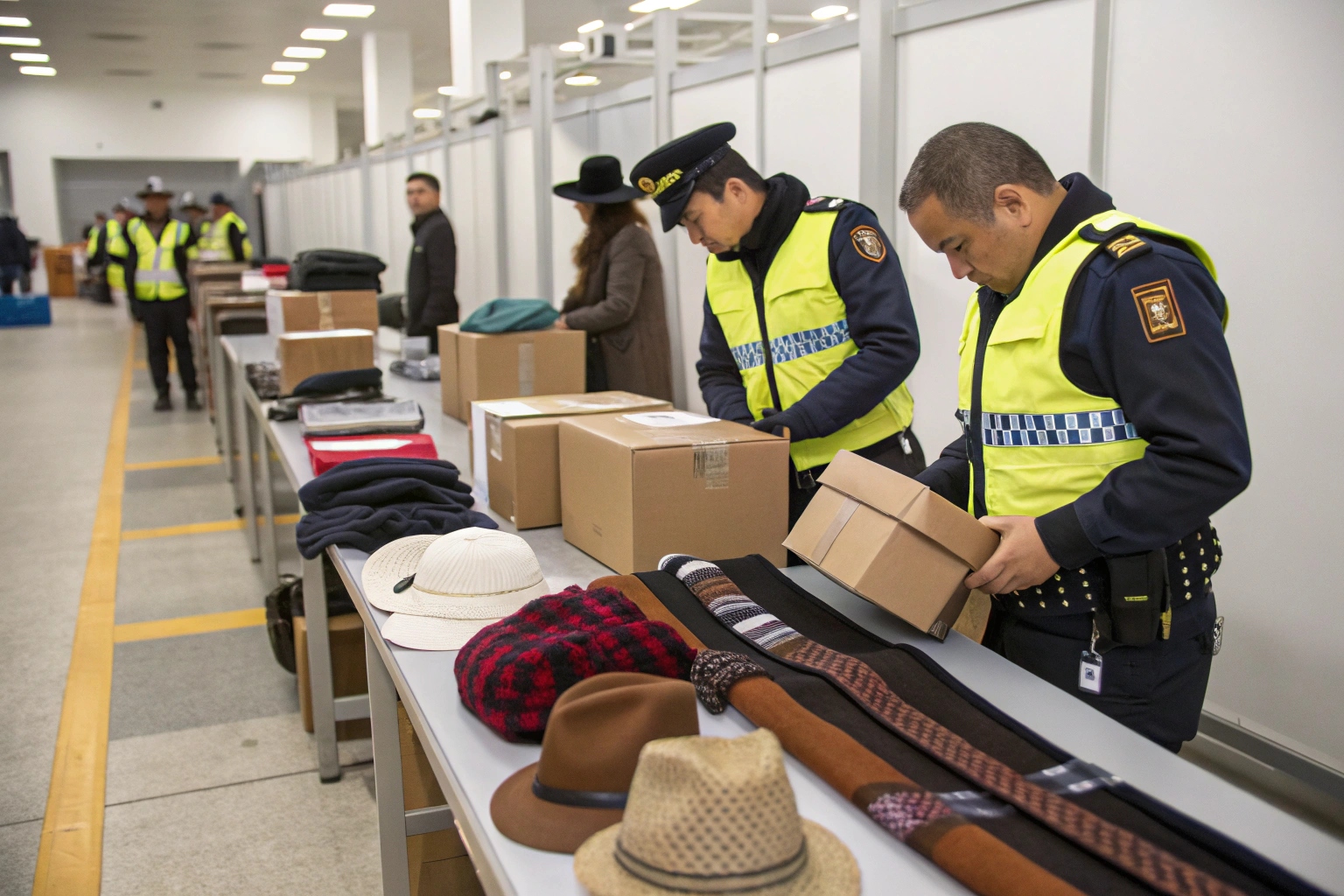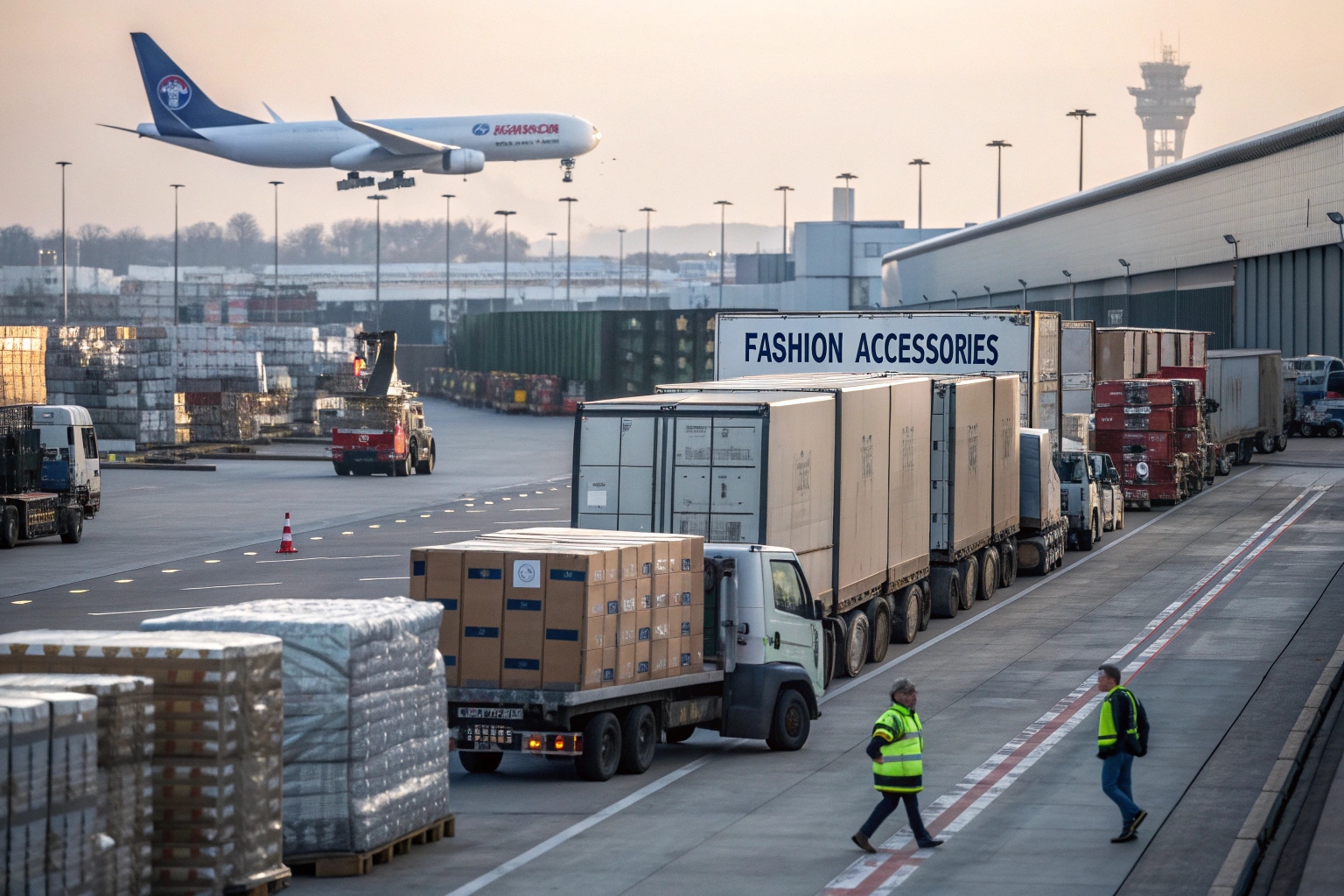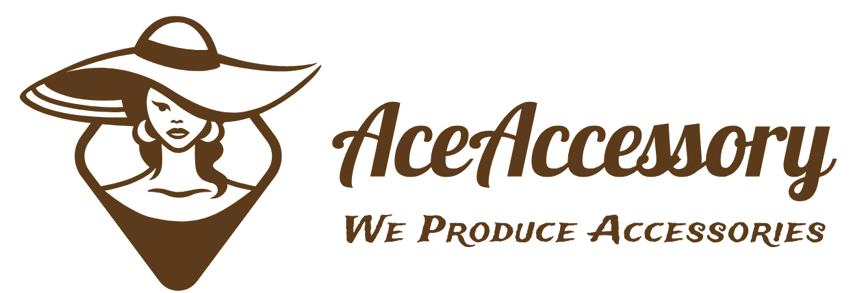Missing one document can delay your shipment, trigger penalties, or even cause your belts and hats to be seized at customs.
To import belts and hats from China, you need a commercial invoice, packing list, bill of lading or airway bill, HS codes, and in some cases, an import license or certificate of origin. Each document must be accurate and match the others.
As an exporter who ships thousands of accessories every year, I’ve seen how customs issues often start with poor paperwork. Let’s break down exactly what you need to import smoothly and avoid delays.
What documents are needed for import from China?
Many importers think their supplier or forwarder will “handle everything”—but customs agents care about what’s written on paper.
You need a commercial invoice, packing list, transport document (bill of lading or airway bill), and correct HS code for customs clearance. Additional documents may be required depending on the product and destination country.

What are the key customs documents required and how do they relate to importing belts and hats?
Here are the basics:
| Document | Description |
|---|---|
| Commercial Invoice | Shows the value, quantity, and terms of sale (EXW, FOB, etc.) |
| Packing List | Details weight, size, and carton count for shipment |
| Bill of Lading / AWB | Confirms transport, required for releasing goods at port or airport |
| HS Code | Classifies product to determine duty rates (e.g. 6505.00.8015 for hats) |
| Certificate of Origin | May reduce duties under trade agreements, not always required |
For example, when we export PU belts to a US brand, we list the HS code as 6217.10.9530 and attach a detailed packing list showing belt sizes and materials.
When hats are involved, we often include material breakdowns, especially if they are straw, felt, or synthetic—because duty rates change based on material.
What happens if your documents are incorrect or inconsistent?
If your invoice says “hats,” your packing list says “scarves,” and your HS code is for gloves, customs will flag the shipment. The result?
- Delays (up to 2–3 weeks)
- Fines or reassessment
- Seizure of goods
That’s why we provide document templates and double-check HS codes before shipment.
What do I need to do to import from China?
Importing isn’t just about paperwork—it’s a process that requires timing, coordination, and compliance.
To import from China, you need to register as an importer, arrange shipping, prepare documentation, clear customs, and manage local delivery. Most importers work with suppliers or forwarders who guide the process.
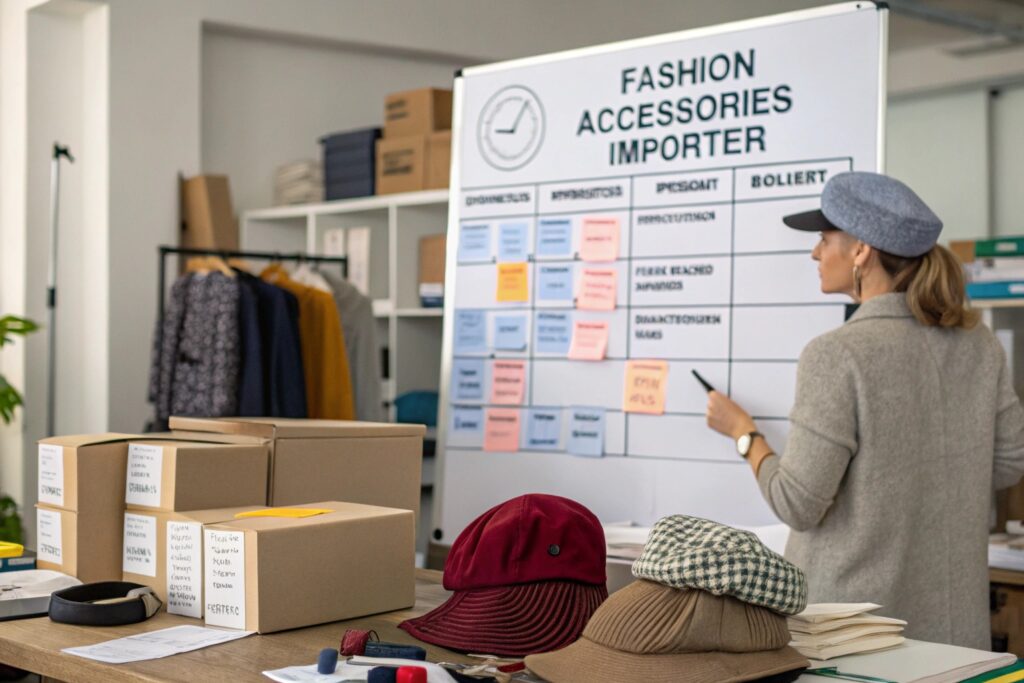
What are the step-by-step actions needed to import accessories like belts and hats from China?
Here’s a typical timeline:
- Choose Supplier: Get quotes, confirm product specs
- Select Incoterm: FOB recommended for control and clarity
- Arrange Freight: Air or sea depending on volume and urgency
- Confirm Documents: Invoice, packing list, B/L, HS code
- Submit to Customs: Use a broker or DDP shipping
- Pay Duties: Based on HS code classification
- Receive Goods: Warehouse or 3PL delivery
We simplify the process by offering FOB and DDP service. For example, one client in New York orders 8,000 straw hats per quarter. We handle freight booking, prepare customs files, and deliver to their door—duty paid.
What can go wrong if you don’t follow the right import steps?
I once worked with a startup that ordered belts under EXW, but forgot to book inland transport from the factory. Their cargo sat for 5 days, and then their forwarder told them the shipment missed the weekly vessel.
Now they use our FOB Ningbo service, and shipments leave on time every month.
What all documents are required for import?
Even seasoned importers can miss a required file—especially when customs rules evolve.
In addition to the invoice and packing list, some shipments require extra documents like Material Safety Data Sheets (MSDS), fumigation certificates (for wooden packaging), or textile declarations (for fabric-based accessories).

What special documents are sometimes needed for belts and hats?
Accessories may trigger additional requirements depending on material:
| Accessory Type | Extra Documents Needed |
|---|---|
| Leather Belts | Declaration of animal origin, if real |
| PU Belts | Material content sheet (PVC, PU, etc.) |
| Straw Hats | Fumigation certificate (for wood/straw) |
| Knit Hats | Textile declaration (fiber content) |
We help clients prepare these documents before production finishes. That way, when goods are ready, all papers are aligned and customs is smooth.
How do we make sure your documents match customs expectations?
We use a document checklist for every order:
- Match product description across all documents
- Verify declared value matches invoice total
- Ensure carton count = packing list + bill of lading
- Confirm HS code and duty rate with broker
That’s why our rejection rate at customs is near zero.
Do I need a license to import from China?
Many buyers wonder if they need government registration or approval to bring goods in.
In the US, you don’t need a license to import most consumer goods like belts and hats. However, you must have a tax ID (EIN), customs bond, and in some cases, work with a licensed customs broker.
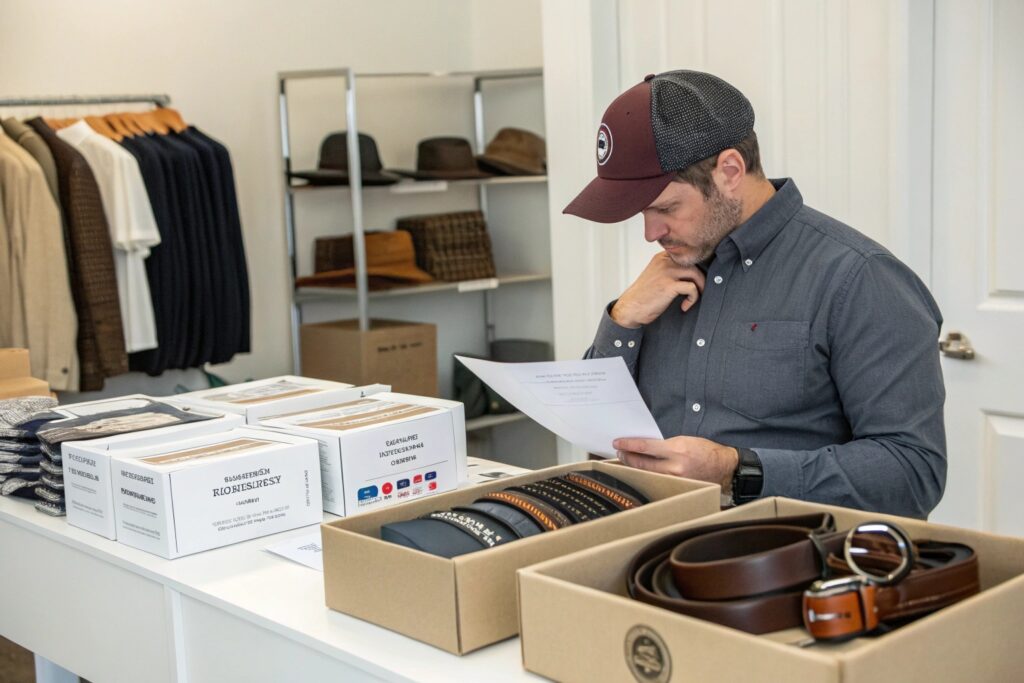
When is an import license or special permit required—and does it apply to accessories?
Belts, hats, scarves, and other accessories are considered low-risk consumer goods. However, import licenses may apply in rare cases:
| Condition | License Needed? |
|---|---|
| Importing food or beverages | Yes |
| Items with batteries or magnets | Yes (FCC/UL) |
| Real fur or leather | Sometimes (CITES) |
| General fashion accessories | No |
We always advise our customers to register as an importer of record (IOR) in the US. This includes:
- Employer Identification Number (EIN)
- Customs bond (single or annual)
- POA form if using a broker
Most of our US clients already have these. For first-time buyers, we walk you through the setup process—or include IOR service in our DDP option.
How can our factory help simplify the licensing process?
We offer:
- Pre-filled import templates
- EIN application guidance
- Broker referrals
- DDP shipping (no license needed on your end)
That’s why even first-time importers feel confident when working with us.
Conclusion
The right customs documents make your belt and hat shipments fast, smooth, and hassle-free. With proper planning and reliable partners, importing from China can be as easy as domestic sourcing.

